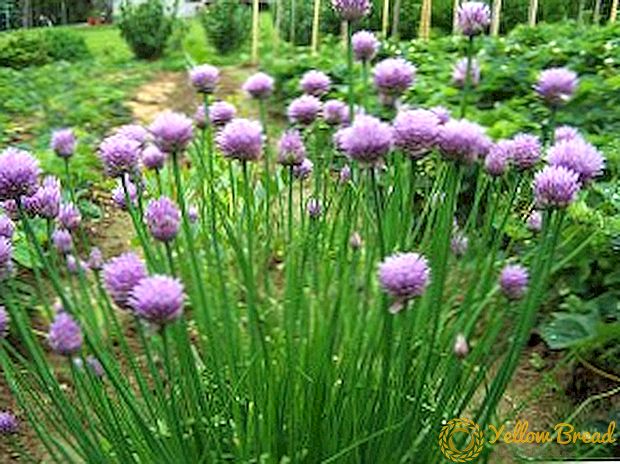 Many gardeners and farmers thought about building a greenhouse on their site. Such a simple construction will help grow seedlings in cold regions, have greens on the table all year round or, alternatively, sell vegetables or fruits that are scarce for the cold season. Estimating the cost of the finished greenhouse in the stores, the desire to buy it immediately disappears, however, if you like to do everything with your own hands and you have enough time, then you can build a greenhouse with a sliding roof yourself. This article will help bring all your dreams to life and save a lot of money.
Many gardeners and farmers thought about building a greenhouse on their site. Such a simple construction will help grow seedlings in cold regions, have greens on the table all year round or, alternatively, sell vegetables or fruits that are scarce for the cold season. Estimating the cost of the finished greenhouse in the stores, the desire to buy it immediately disappears, however, if you like to do everything with your own hands and you have enough time, then you can build a greenhouse with a sliding roof yourself. This article will help bring all your dreams to life and save a lot of money.
- The advantages of using greenhouses with opening roof
- Features of the design of greenhouses with sliding mechanism
- How to make a greenhouse with an opening roof with your own hands (polycarbonate)
- Preparatory work, the choice of material
- What tool you need to build a greenhouse
- How to make a greenhouse with a sliding mechanism, step by step instructions
- Option of making a greenhouse with a sliding roof of window frames
- Material and tool preparation
- Greenhouse manufacturing
The advantages of using greenhouses with opening roof
Before you make a greenhouse with an opening top, you should learn about its differences and positive aspects.  If you are confused by such a greenhouse design, and you are used to seeing structures that have monolithic roofs, then take a look at "pluses" of this variation:
If you are confused by such a greenhouse design, and you are used to seeing structures that have monolithic roofs, then take a look at "pluses" of this variation:
- In summer, such greenhouses are much easier to ventilate, since fresh air flows not through narrow doors, but through the roof. It is worth mentioning that with such ventilation there is no draft, which means that nothing threatens the plants.
- A folding roof gives more light and heat than a monolithic one. Therefore, you will not only give the crops the necessary sunlight, but also save on artificial light.
- Greenhouse with a retractable roof is easier to save from deformation in the snowy winters. That is, it is enough for you to remove the roof and let the snow cover the soil inside the building. In buildings with a monolithic roof, such a “manipulation” is impossible.
- Protection of landings from overheating. If in the spring nature decided to make a sharp rise in temperature, then the plants can “bake” in an ordinary greenhouse under the scorching sun. Having a convertible structure, reducing the temperature is not difficult, because the roof area is many times larger than the area of the door.
- Efficiency.It takes much less money to build a greenhouse with an opening top, since you are building a greenhouse "by yourself", choosing the right size and not saving on the structure's frame.
From the above, it can be concluded that a convertible greenhouse has enough advantages to draw attention to it. Especially since its construction does not “hit the pocket of the owner,” which means it will immediately start generating revenue.
Features of the design of greenhouses with sliding mechanism
 Considering the construction of buildings, you should pay attention to the variations of the roof for the greenhouse.
Considering the construction of buildings, you should pay attention to the variations of the roof for the greenhouse.
Regardless of the shape and size of the building, according to the design features, all roofs are divided into two types: folding and sliding.
Sliding roof. Elements are mounted on special "rails" along which parts of the structure slide. Such a greenhouse is opened either manually or using a mechanism.
It is worth noting that the folding roof is most often placed on greenhouses, made in the shape of a house, and the sliding roof - on structures with smooth edges or in the shape of a dome.
If financial opportunities allow, you can create a semblance "smart-greenhouses", which itself reacts to humidity and temperature, and the force mechanism will open or close the roof when it is needed. It would seem that there are two traditional types of greenhouses with drop-downs that everyone uses, why try something else and reinvent the wheel? However, it is not so simple.
 If, for example, you want to build a high narrow greenhouse with an opening top, then you cannot do with just one mechanism.That is why there are so-called "hybrids" when a folding and a sliding system is installed on the greenhouse. If you have the necessary knowledge, or the construction of the structure requires it, then you can build a greenhouse with a removable roof with your own hands. That is, the roof will open and separate from the greenhouse. In this case, a hinged roof is used, but the mounts themselves are selected so that they can be detached from the moving part.
If, for example, you want to build a high narrow greenhouse with an opening top, then you cannot do with just one mechanism.That is why there are so-called "hybrids" when a folding and a sliding system is installed on the greenhouse. If you have the necessary knowledge, or the construction of the structure requires it, then you can build a greenhouse with a removable roof with your own hands. That is, the roof will open and separate from the greenhouse. In this case, a hinged roof is used, but the mounts themselves are selected so that they can be detached from the moving part.
How to make a greenhouse with an opening roof with your own hands (polycarbonate)
Moving on to how to make a greenhouse with an opening roof. To deal with the choice of the desired roofing material, we make a small digression.
Preparatory work, the choice of material
The greenhouse is usually covered with foil, but this material, although it has a low price, is not suitable for creating a durable structure. If you use the tape,then you have to "patch" the greenhouse at least once a year. And one or two inconspicuous holes in the coating can destroy all planted crops.
 That is why we recommend using polycarbonate. Is polycarbonate better than film and how expensive is it? Speaking about the price, it is worth saying that this is the only minus of the material. It costs an order of magnitude more expensive than a film, but it is worth learning about its benefitsand the price becomes justified.
That is why we recommend using polycarbonate. Is polycarbonate better than film and how expensive is it? Speaking about the price, it is worth saying that this is the only minus of the material. It costs an order of magnitude more expensive than a film, but it is worth learning about its benefitsand the price becomes justified.
- Polycarbonate transmits light better than film.
- A greenhouse with a drop-out carbonate top is several times more resistant to mechanical damage. The material can withstand more weight than the film, so it is better protected from strong gusts of wind or heavy snowfall.
- The material has the same plasticity as the film, so it is used to create greenhouses of any shape.
- Polycarbonate serves at least twenty years, which is tens of times longer than the life of cheaper material.
- Polycarbonate does not get wet and does not pass moisture.
One way or another, and you will have to feel yourself as an architect. Before drawing up the drawings, select the desired plot (so that there is no strong inclination or it was not located in the pit), visually position the greenhouse so that it is illuminated to the maximum by the sun.
Followed by blueprints. To compose them, you need to measure the length, width and height of the future greenhouse. Think about what products will be grown, because, perhaps, you need not a greenhouse, but rather a greenhouse with a folding or sliding top from the same polycarbonate. It is better to make drawings for several days, or even weeks, in order to accurately measure all dimensions and buy the strictly necessary amount of materials. 
What tool you need to build a greenhouse
To build a folding or sliding greenhouse made of polycarbonate with your own hands, you need to collect a certain list of tools.
It is worth noting that in this case parts of the greenhouse will be fastened with bolts, clamps and other parts.Welding will not be used due to the fact that such a greenhouse in the future is almost impossible to disassemble. If you are concerned about the strength and efficiency of such a structure, then we dare to assure you that the fasteners are not inferior to welding for strength, and for money it turns out cheaper.
To build a folding or sliding greenhouse with your own hands, you will need the following tools:
- Bulgarian;
- Jigsaw;
- Electric drill;
- Level, tape, scissors for metal;
- Cross screwdriver;
- Spanners;
- Device for bending the profile pipe.
To this list, you can add all the devices to protect against dust, noise and mechanical damage (building glasses, headphones, respirator, rubberized gloves).
How to make a greenhouse with a sliding mechanism, step by step instructions
We begin the construction of the sliding greenhouses with their own hands.
 Need to start with foundation casting. This is a mandatory element of polycarbonate greenhouses, because the frame and covering material weighs a lot, and the greenhouse will simply begin to sink like a house without a foundation. Fill the foundation around the perimeter, given the creation of a "pillow".The depth and width of the foundation is selected depending on the structure of the soil and the amount of precipitation.
Need to start with foundation casting. This is a mandatory element of polycarbonate greenhouses, because the frame and covering material weighs a lot, and the greenhouse will simply begin to sink like a house without a foundation. Fill the foundation around the perimeter, given the creation of a "pillow".The depth and width of the foundation is selected depending on the structure of the soil and the amount of precipitation.
Further mounted greenhouse frame. Depending on your preferences, you can use steel, aluminum or a mounting profile. We do not recommend the use of aluminum, as though it has a small weight, it is too plastic for serious structures. It is worth taking aluminum only if you have a small greenhouse (no more than 30 sq. M.). When installing the frame, pay attention to the density of the partitions and their additional reinforcement. Even if there are no strong winds in your region, additional reinforcement will never hurt.
In the process of mounting the frame, use the so-called "crabs" or cross joints in order to best secure the components.
 The most important point is sliding mechanism. The first option is to install the roof on the rails. It is suitable for large greenhouses, in which the moving part weighs a lot and it simply cannot be moved if it is not equipped with wheels.Install the rail (suitable mounting profile), which is attached to the rail. The system of movement on rails looks like a compartment door. Next, we construct a convertible top, on which a metal bar with wheels is mounted.
The most important point is sliding mechanism. The first option is to install the roof on the rails. It is suitable for large greenhouses, in which the moving part weighs a lot and it simply cannot be moved if it is not equipped with wheels.Install the rail (suitable mounting profile), which is attached to the rail. The system of movement on rails looks like a compartment door. Next, we construct a convertible top, on which a metal bar with wheels is mounted.
More simple and cheap option is suitable for small greenhouses. Used by slotting system. The point is that, unlike in the previous version, this does not involve installing rails and moving along the means of small wheels. Best of all, the "mortise version" is suitable for arched and pitched roofs.
A strip (about 7-10 cm wide) of polycarbonate is fixed on the prepared arcs. Next, plastic plates are attached to the material, which have a width of 6 to 15 mm and a length of 1.5-3 cm. And on top of the plastic we put an identical first strip of polycarbonate. As a result, we get grooves into which the main sheets of polycarbonate will be inserted already. Thus, the frame will be static, and only the material itself will move.
 When the frame is ready, go to cutting and installing polycarbonate.After accurate measurements, cut out the cut lines and use a jigsaw or circular saw. It is necessary to fasten the material with an overlap (about 40 cm), using stainless bolts or screws with seals. It should be noted that it is not necessary to tighten the bolts "against the stop", since you can damage the covering material. We do not recommend nailing polycarbonate, otherwise in case of damage it will be difficult to remove it, and you can ruin the frame of the greenhouse itself.
When the frame is ready, go to cutting and installing polycarbonate.After accurate measurements, cut out the cut lines and use a jigsaw or circular saw. It is necessary to fasten the material with an overlap (about 40 cm), using stainless bolts or screws with seals. It should be noted that it is not necessary to tighten the bolts "against the stop", since you can damage the covering material. We do not recommend nailing polycarbonate, otherwise in case of damage it will be difficult to remove it, and you can ruin the frame of the greenhouse itself.
Finally, install the front door and, if it was intended, the windows.
With the help of the described actions you can build a greenhouse with a sliding roof with your hands quickly and easily.
Option of making a greenhouse with a sliding roof of window frames
The greenhouse with a sliding roof on the basis of window frames, though not very durable, but helps to save a lot of money. If you have enough of the necessary material, it is worthwhile to put the partitions as tight as possible.
The construction of a greenhouse of window frames has its own characteristics:
- a greenhouse can only be in the form of a house; no dome-shaped structures can be made;
- although wood is lighter than iron, it still weighs significantly on the ground, so the foundation must be;
- only the slot system of fastening is used for the movement of the roof; it is impossible to put such a roof on the rails;
- material consumption will be many times more if the window frames have additional partitions for the vents;
- wood is a hydrophobic material, which means that it will absorb a lot of moisture and deteriorate, so you have to treat the frame with a non-toxic plant varnish or gel;
- frames before installation should be cleaned from paint, varnish and other harmful components;
- consider the characteristics of the plants that you will grow in the greenhouse, because many pests use wood as a shelter or feed on it.
 Thus, the use of window frames, although advantageous from an economic point of view, however, carries additional problems and risks. If you want to install a greenhouse for 2-3 years, then the window frames will be very useful, but if you build the structure for 10-15 years, it is better to refuse frames as a frame.
Thus, the use of window frames, although advantageous from an economic point of view, however, carries additional problems and risks. If you want to install a greenhouse for 2-3 years, then the window frames will be very useful, but if you build the structure for 10-15 years, it is better to refuse frames as a frame.
Material and tool preparation
To build a sliding greenhouse with your own hands from window frames, you will need the following materials and tools:
- Twine for ground marking;
- Drill and drills (for metal and wood).
- Shovel and bayonet shovels;
- Metal corners and other fasteners for wooden elements;
- Anchor bolts (16 × 150 mm);
- Wooden bars (50 × 50 mm);
- Ax and hammer;
- Metal fittings;
- Polycarbonate;
- Screwdriver and a set of screws;
- Bulgarian with discs for metal;
- Set of screwdrivers;
- Nail pullers and pliers;
- Putty knife;
- Sander;
- Primer and putty;
- Composition for removing old paint;
- Antifungal and antiseptic impregnation;
- Paint and paint brushes;
- Polyurethane foam.
 Before installation you need to prepare the window frames - get rid of hinges, bolts and handles.
Before installation you need to prepare the window frames - get rid of hinges, bolts and handles.
Remove the old paint using a special tool, and the wood should be treated with an antiseptic intended for impregnation of wooden bars.
Greenhouse manufacturing
The installation and fastening of the frame of the greenhouse, which consists of window frames, is significantly different, so it must be thoroughly studied.
Before construction clean the window frames from paint and dirt, fill the gap with foam.
After that we start install window frames on the prepared foundation. It is best to use iron corners for fixing window blocks, which connect the frames together. The corner is laid on the inside and tightly pressed to the wood with a screwdriver. The frame must be stable, which will ensure you a long and reliable use.
Next you need to do light crate. It is made of mounting profiles, wooden slats and steel wire. Window blocks are installed on the base and fastened with screws, clamps, angles, wire and nails.
 After forming the frame, inspect it carefully.
After forming the frame, inspect it carefully.
If it seems to you that the building does not have enough stability, install a few supports on the insidewhich will remove part of the load from the side faces.
Next, fasten the polycarbonate. So that after bonding there are no holes, leave a small margin on each flap. If in the end the covering material hangs somewhere, then you can always cut it off.
After construction is completed, cover any gaps with foam and apply paint on the exterior of the frame.
On this instruction for the construction of the greenhouse is completed. Use in practice not only the stated data, but also your experience, real conditions and advice of knowledgeable people. Such a construction requires the expenditure of effort and finances, however, it opens up additional opportunities for you that will help pay for the construction.






